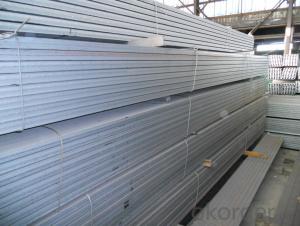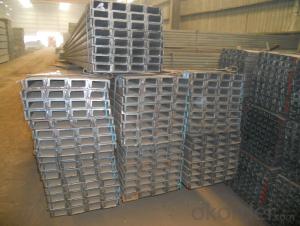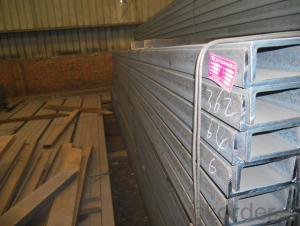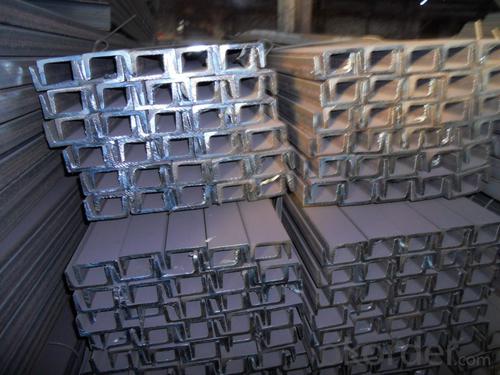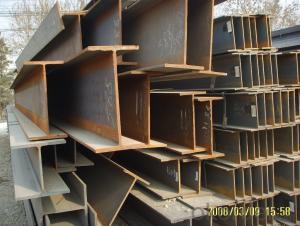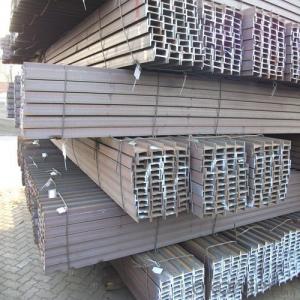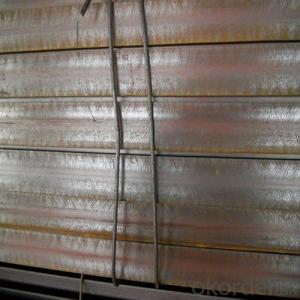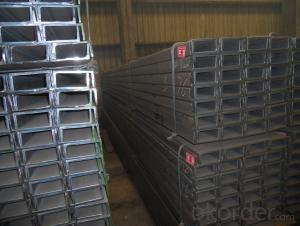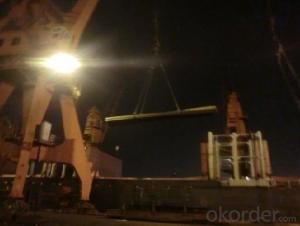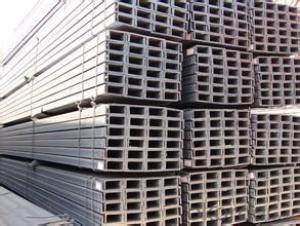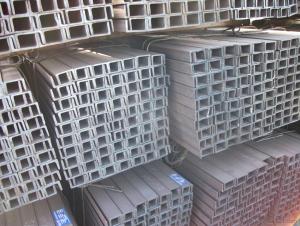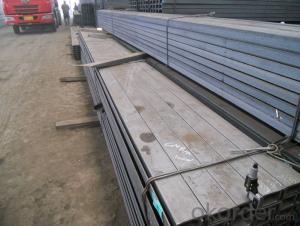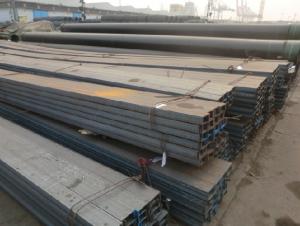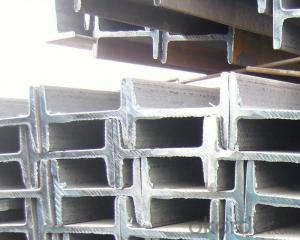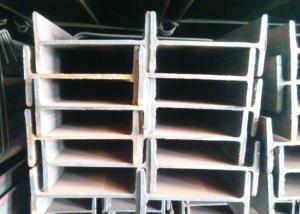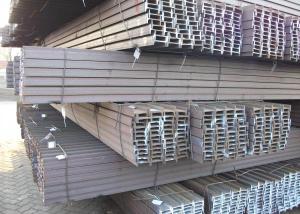Hot Rolled Carbon Steel U-Channel with High Quality
- Loading Port:
- Tianjin
- Payment Terms:
- TT or LC
- Min Order Qty:
- 20 m.t.
- Supply Capability:
- 1000 m.t./month
OKorder Service Pledge
OKorder Financial Service
You Might Also Like
Product Description:
OKorder is offering Hot Rolled Steel U-Channel at great prices with worldwide shipping. Our supplier is a world-class manufacturer of steel, with our products utilized the world over. OKorder annually supplies products to European, North American and Asian markets. We provide quotations within 24 hours of receiving an inquiry and guarantee competitive prices.
Product Applications:
Hot Rolled Steel U-Channel can be applied to construction of warehouses, workshops, sport stadiums and car parks etc.The hot rolled channel steel belongs to carbon structural steel which is applied to in the field of construction and machinery.In details, the hot rolled channel steel is usually used for arch-itechtural structure, and they could be welded in order to support or hang a vari-ety of facilities. They are also usually used in combination with I beam. Generally,the hot rolled channel steel we supply must possess perfect welding property, riveting property and mechanical property and so on.
Product Advantages:
OKorder's Hot Rolled Steel U-Channel are durable, strong, and resist corrosion.
Main Product Features:
· Premium quality
· Prompt delivery & seaworthy packing (30 days after receiving deposit)
· Corrosion resistance
· Can be recycled and reused
· Mill test certification
· Professional Service
· Competitive pricing
Product Specifications:
We supply high quality MS Channel at reasonable price, including Chinese standard, Japanese standard and so on.
Standard | GB/JIS |
Material Grade | Q235,SS400 |
Technique: | Hot Rolled |
Sizes as per chinese standard: | 50*37*4.5mm - 300*89*11.5mm |
Sizes as per japanese standard: | 50*25*3mm – 200*80*7.5mm |
Length: | 6meter, 9meter, 12meter |
The chemical composition of HR Channel Steel according to Q235B
Alloy No | Grade | Element(%) | ||||
C | Mn | S | P | Si | ||
Q235 | B | 0.12-0.20 | 0.3-0.7 | ≦0.045 | ≦0.045 | ≦0.3 |
Package & Delivery of MS Channel:
1.The hot rolled channel steel will be packed in bundle with steel wire at each end of every bundle and color marking in order to help the customer to recognize his goods more easily at sight.
2. And the hot rolled channel steel could be loaded into 20ft or 40ft container, or by bulk cargo.If the weight of each bundle reaches more than 3.5 mt, the loading by break bulk cargo should be choosed.When the weight of each bundle reaches less than 3mt, the loading by container should be choosed.
3.As for the transportaion from mill to loading port, the truck will be usually used. And the maximum quantity for each truck is 40mt.
4.All in all, we could do in accordance with customer's request
FAQ:
Q1: Why buy Materials & Equipment from OKorder.com?
A1: All products offered byOKorder.com are carefully selected from China's most reliable manufacturing enterprises. Through its ISO certifications, OKorder.com adheres to the highest standards and a commitment to supply chain safety and customer satisfaction.
Q2: How do we guarantee the quality of our products?
A2: We have established an advanced quality management system which conducts strict quality tests at every step, from raw materials to the final product. At the same time, we provide extensive follow-up service assurances as required.
Q3: Can stainless steel rust?
A3: Stainless does not "rust" as you think of regular steel rusting with a red oxide on the surface that flakes off. If you see red rust it is probably due to some iron particles that have contaminated the surface of the stainless steel and it is these iron particles that are rusting. Look at the source of the rusting and see if you can remove it from the surface.
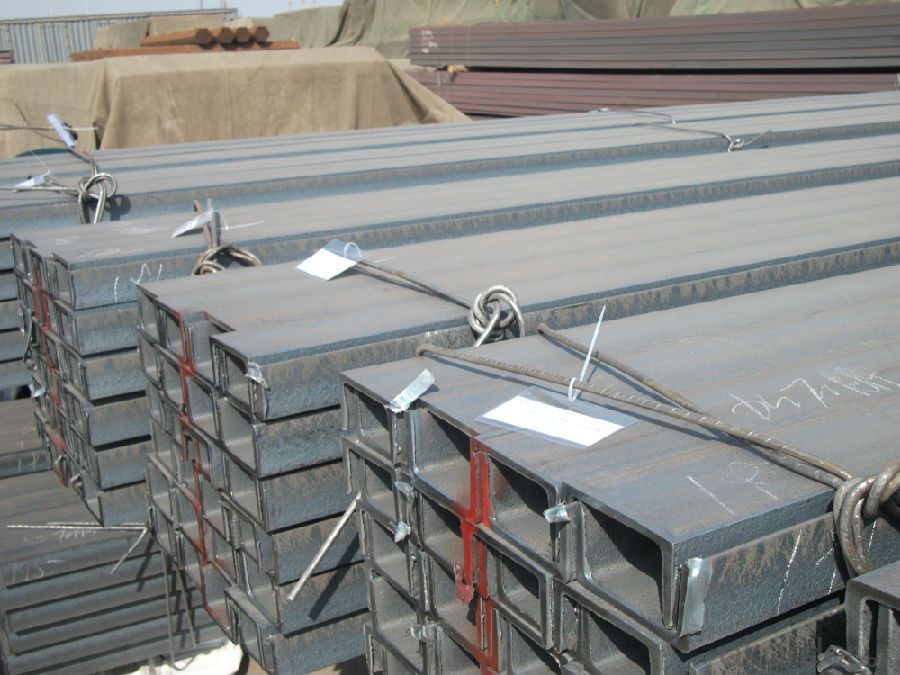
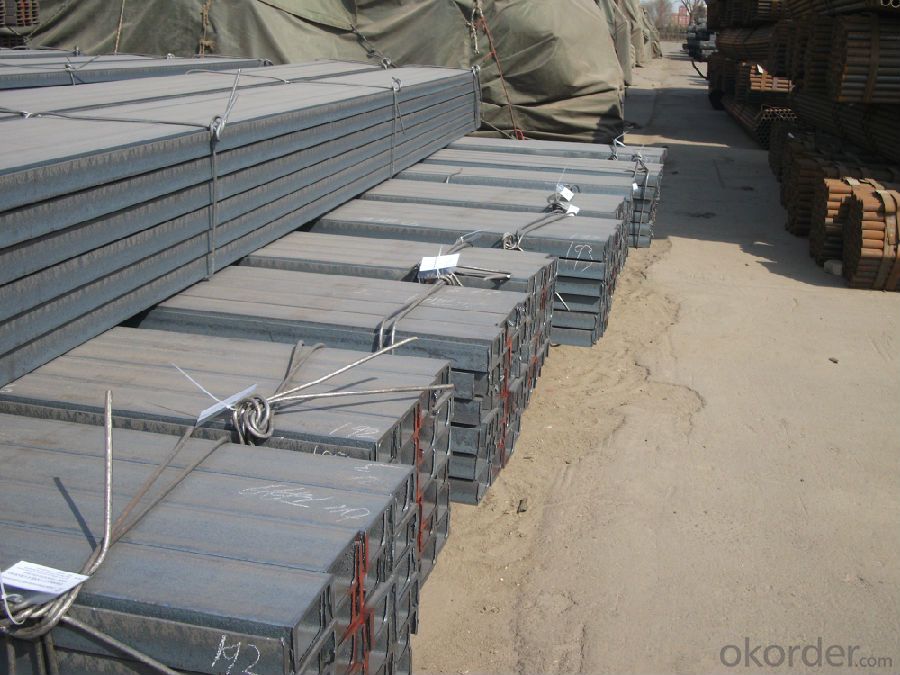
- Q: Can steel I-beams be used in industrial or heavy-duty construction projects?
- Yes, steel I-beams are commonly used in industrial and heavy-duty construction projects. They are a popular choice due to their strength, durability, and versatility. Steel I-beams have the ability to support heavy loads and provide structural stability, making them ideal for constructing large buildings, bridges, warehouses, and other industrial structures. Additionally, their high strength-to-weight ratio allows for longer spans and reduced need for support columns, providing more open and flexible spaces. Steel I-beams can also be easily customized to fit specific project requirements and are resistant to various environmental factors such as fire, corrosion, and pests. Overall, steel I-beams are a reliable and efficient choice for industrial and heavy-duty construction projects.
- Q: What is the typical lifespan of steel I-beams?
- The typical lifespan of steel I-beams can vary depending on several factors such as the quality of the steel used, the environment in which they are installed, and the level of maintenance provided. However, under normal conditions, steel I-beams are designed to have a very long lifespan. In general, they can last for several decades, if not longer, without any significant deterioration or structural issues. With proper care and maintenance, including regular inspections and necessary repairs, steel I-beams can remain structurally sound and functional for a very long time. It is important to note that factors such as exposure to corrosive environments or excessive loads can potentially shorten the lifespan of steel I-beams, so it is crucial to consider these factors when assessing their longevity. Additionally, advancements in steel manufacturing and coating technologies have further improved the durability and longevity of steel I-beams, making them even more reliable and long-lasting.
- Q: Can steel I-beams be used in data centers or server rooms?
- Yes, steel I-beams can be used in data centers or server rooms. Steel I-beams are commonly used for structural support in buildings and can provide stability and strength required for heavy equipment and infrastructure in data centers and server rooms.
- Q: Can steel I-beams be painted or coated for aesthetic purposes?
- Yes, steel I-beams can be painted or coated for aesthetic purposes. Painting or coating steel I-beams can help enhance their appearance and blend them into the surrounding architectural or design elements. Additionally, paint or coating can provide a protective layer against corrosion and weathering, extending the lifespan of the I-beams. However, it is important to use appropriate paints or coatings that are specifically designed for steel to ensure proper adhesion and longevity.
- Q: How do you connect steel I-beams together?
- Steel I-beams can be connected together through various methods, such as welding, bolting, or using structural steel connectors. Welding involves melting the edges of the beams and fusing them together using heat. Bolting involves using bolts and nuts to secure the beams together. Structural steel connectors are pre-engineered components that are specifically designed to connect steel I-beams, providing a strong and reliable connection. The choice of method depends on factors such as the load-bearing requirements, structural design, and project specifications.
- Q: Can steel I-beams be used in interior design or decorative applications?
- Yes, steel I-beams can be used in interior design or decorative applications. They are often utilized to create a modern and industrial look in residential and commercial spaces. The clean lines and structural strength of steel I-beams can add a unique and contemporary aesthetic to various interior design elements such as exposed ceilings, staircase supports, mezzanines, room dividers, and shelving systems.
- Q: How do you calculate the maximum bending moment for a steel I-beam?
- In order to determine the maximum bending moment for a steel I-beam, one must take into account the load applied to the beam as well as its span length. The bending moment serves as a measurement of the internal force that the beam undergoes when subjected to a load that creates a bending effect. To begin, the load applied to the beam must be determined. This load can take the form of a uniformly distributed load, a point load, or a combination of both. For instance, if a uniformly distributed load of 10 kN/m is applied over a span length of 5 meters, the total load would be calculated as 10 kN/m multiplied by 5 m, resulting in a total load of 50 kN. Following this, the reactions at the supports must be calculated. These reactions are dependent on the type of support utilized as well as the distribution of the load. As an example, if the beam is simply supported at both ends and subjected to a uniformly distributed load, each support would have a reaction of 25 kN. Once the reactions are determined, the location and magnitude of the maximum bending moment can be ascertained. This point is found where the shear force changes sign or reaches its maximum value. The bending moment at this location is calculated using the formula M = F * d. In this formula, M represents the bending moment, F denotes the shear force, and d signifies the perpendicular distance from the point of interest to the point where the bending moment is being calculated. For instance, if the shear force at the support is 25 kN and the distance from the support to the point where the bending moment is being calculated is 2 meters, the maximum bending moment would be calculated as 25 kN multiplied by 2 m, resulting in a value of 50 kNm. It is important to note that these calculations assume the beam to be elastic and to adhere to the linear elastic theory. If the beam is subjected to excessive loads, it may undergo plastic deformation, necessitating additional considerations and calculations. Furthermore, the structural properties of the steel I-beam, including its moment of inertia, cross-sectional dimensions, and material properties, also play a vital role in determining the maximum bending moment.
- Q: What are the advantages of using painted steel I-beams?
- Construction projects can benefit from the use of painted steel I-beams for several reasons. To begin with, the application of paint on the beams creates a protective layer that shields against corrosion and rust. Moisture and chemicals can cause steel to oxidize, but the paint acts as a barrier, preventing contact between the metal and these elements. As a result, the lifespan of the I-beams is extended, reducing the need for frequent maintenance or replacement. Additionally, painted steel I-beams provide an improved aesthetic to the overall structure. The paint can be customized to match the desired color scheme or architectural style, seamlessly blending the beams with the surrounding elements. This enhances the appearance and value of the building, making it more visually appealing and cohesive. Moreover, the application of paint on steel I-beams enhances their visibility and safety. By using high-visibility paint, the beams become more noticeable in low-light conditions, increasing safety for workers and pedestrians. This is especially beneficial in industrial or construction settings where heavy machinery or vehicles operate near these beams. Furthermore, painted steel I-beams offer easier identification and labeling within a construction site. By assigning different colors or markings to specific beams, their location and purpose become easier to track and identify. This promotes organization and efficiency in the construction project, reducing errors and saving time. Lastly, painted steel I-beams prove to be cost-effective in the long run. Although the initial investment may be slightly higher compared to unpainted beams, the added protection against corrosion and rust significantly reduces maintenance and repair costs over time. Furthermore, the enhanced durability of the painted beams ensures a longer lifespan, minimizing the need for replacement or repairs. In conclusion, the use of painted steel I-beams offers advantages such as corrosion protection, improved aesthetics, enhanced visibility and safety, easier identification, and long-term cost savings. These benefits make painted steel I-beams a popular choice in various construction applications.
- Q: Can steel I-beams be used in sports arenas or stadiums?
- Sports arenas and stadiums can indeed incorporate steel I-beams. In fact, they are frequently utilized in the construction of these expansive edifices owing to their robustness, longevity, and adaptability. Steel I-beams offer exceptional load-bearing capabilities, enabling them to bear heavy burdens and endure the forces generated during sporting events, such as vibrations, impacts, and dynamic loads. By employing steel I-beams in sports arenas and stadiums, the structural integrity of the facility is ensured, creating a secure environment for both spectators and athletes. Furthermore, the versatility of steel I-beams allows for flexible design options and efficient construction, rendering them a favored selection in the industry.
- Q: How do steel I-beams compare to laminated veneer lumber (LVL) beams in terms of strength and cost?
- Steel I-beams and laminated veneer lumber (LVL) beams have different characteristics in terms of strength and cost. In terms of strength, steel I-beams are known for their exceptional load-bearing capacity. They are incredibly strong and can withstand heavy loads and high levels of stress. Steel is a highly durable material and can resist bending and warping, making I-beams a popular choice for construction projects that require robust structural support. On the other hand, laminated veneer lumber (LVL) beams also possess considerable strength. LVL is engineered wood made by layering thin wood veneers together, which are then bonded with adhesives under high pressure. This process creates a highly stable and strong beam that is less prone to warping and splitting compared to traditional solid wood beams. While LVL beams may not match the sheer strength of steel I-beams, they still offer excellent load-bearing capabilities and are often used in residential and light commercial construction projects. When it comes to cost, steel I-beams tend to be more expensive than LVL beams. Steel is a costlier material to manufacture and requires specialized tools and techniques for installation. Additionally, the weight of steel I-beams can increase transportation costs. LVL beams, on the other hand, are typically more cost-effective due to the relative abundance of wood as a natural resource and the simpler installation process. However, it is important to note that the specific cost comparison between steel I-beams and LVL beams can vary depending on factors such as beam size, span length, and regional market conditions. Therefore, it is advisable to consult with construction professionals or suppliers to get accurate cost estimates for a particular project. In summary, steel I-beams offer superior strength and load-bearing capacity, but at a higher cost. Laminated veneer lumber (LVL) beams provide excellent strength and stability while being relatively more cost-effective. Ultimately, the choice between the two will depend on the specific requirements, budget, and preferences of the construction project.
Send your message to us
Hot Rolled Carbon Steel U-Channel with High Quality
- Loading Port:
- Tianjin
- Payment Terms:
- TT or LC
- Min Order Qty:
- 20 m.t.
- Supply Capability:
- 1000 m.t./month
OKorder Service Pledge
OKorder Financial Service
Similar products
Hot products
Hot Searches
Related keywords

